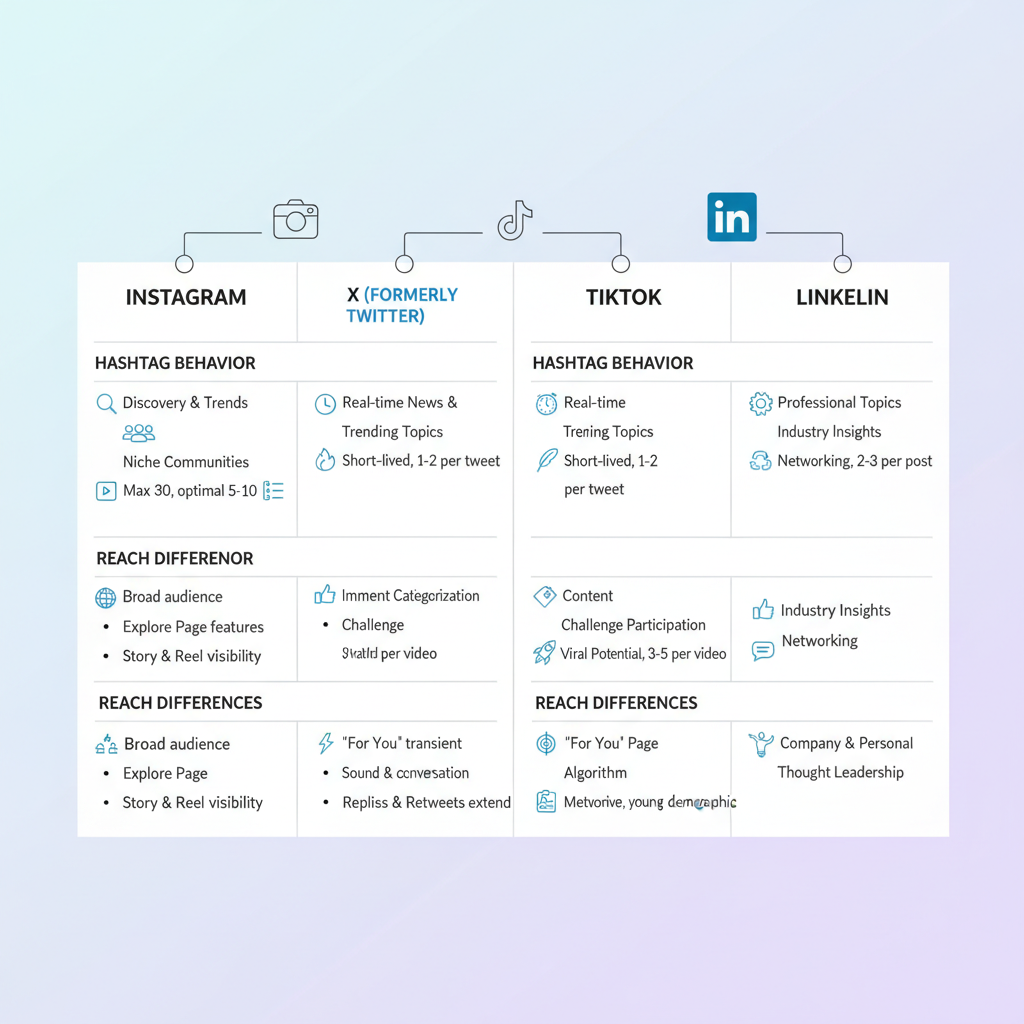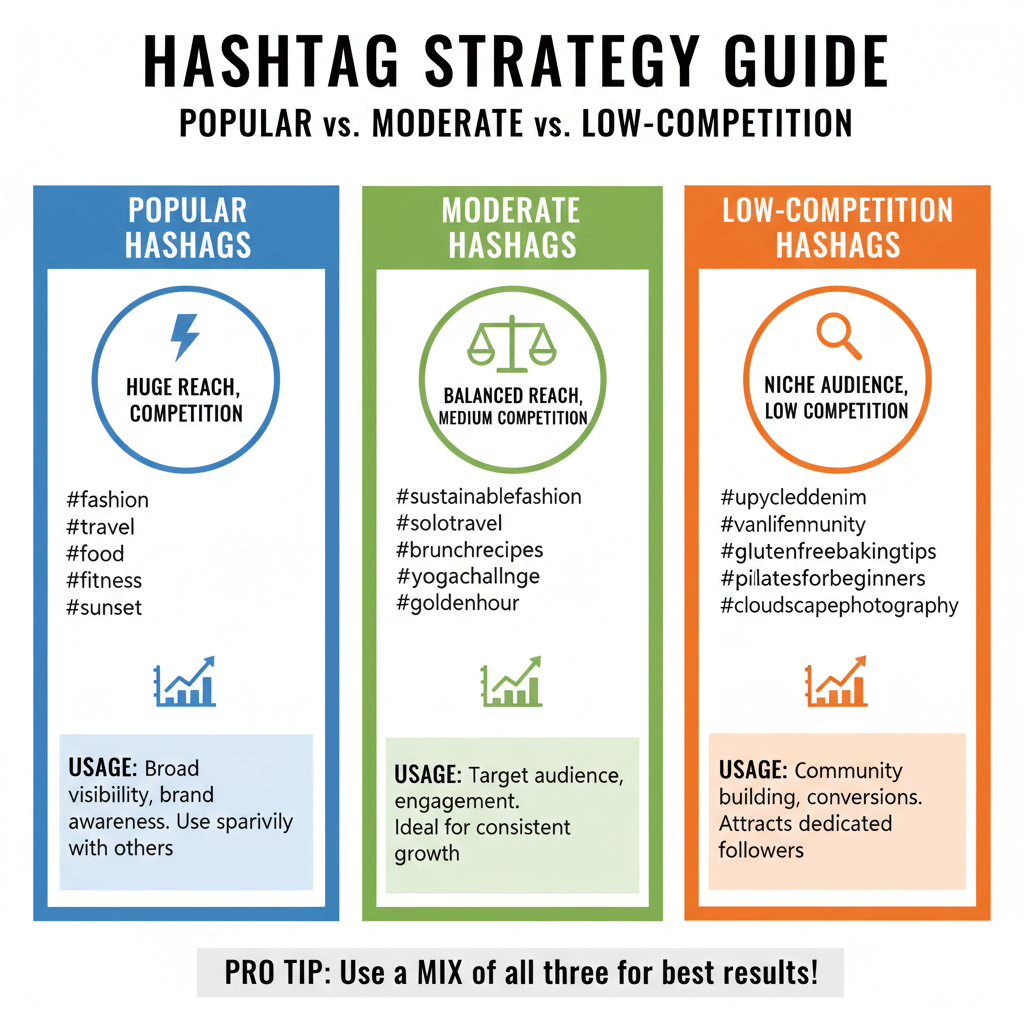How to Use Hashtags Effectively on Social Media
Learn how to use hashtags effectively across social media with research tips, platform-specific strategies, and a mix of broad and niche tags.

How to Use Hashtags Effectively on Social Media
In today's fast-paced digital landscape, learning how to use hashtags effectively on social media can boost your visibility, amplify reach, and engage target audiences across platforms. Hashtags turn your posts into discoverable content streams, making them an essential part of any marketer's toolkit. This guide explores practical tips, research methods, and platform-specific strategies so you can maximize the impact of `#tags`.

---
Understanding What Hashtags Are
Hashtags are keywords or phrases preceded by the `#` symbol. When you add them to a post, they categorize the content, making it discoverable for users searching for similar topics.
For example:
`#DigitalMarketing` helps your content surface in searches or feeds dedicated to that category.
How Hashtags Work Across Platforms
- Instagram: Hashtags group posts into searchable collections; content is discoverable via search, Explore tab, or hashtag links.
- Twitter (X): They connect conversations around trending topics and appear prominently in "Trends".
- LinkedIn: Encourage professional topic networking, ideal for B2B engagement.
- TikTok: Fuel content discovery via the For You Page (FYP) algorithm.
- YouTube: Tag videos for better search visibility and algorithm categorization.
---
Researching Trending and Relevant Hashtags
Before posting, research is your foundation. Identify hashtags with high relevance and active usage within your niche.
Effective research methods:
- Monitor competitor posts and note recurring hashtags.
- Explore platform-specific "Trending" sections.
- Use tools such as Hashtagify, RiteTag, or native search.
- Engage in community discussions to uncover lesser-known hashtags.

---
Broad vs. Niche Hashtags: The Key Difference
Broad hashtags have large search volumes but face higher competition; niche hashtags are more targeted, often leading to stronger engagement from a specific audience.
| Type | Example | Pros | Cons |
|---|---|---|---|
| Broad | #Travel | Huge reach potential | Oversaturated, lower visibility |
| Niche | #EcoFriendlyTravel | Reaches targeted audience | Lower total impressions |
---
Mixing Popular, Moderate & Low-Competition Hashtags
A robust hashtag strategy blends categories to balance reach and engagement:
- Popular Hashtags: Wide exposure but shorter visibility window.
- Moderate Popularity: Steadier visibility over time.
- Low Competition/Niche: Deep engagement with a focused audience.
Example Combination for an Instagram eco-travel post:
- Popular: `#TravelGoals`
- Moderate: `#SustainableTrips`
- Niche: `#PlasticFreeTravel`
---
Avoiding Banned, Spammy, or Irrelevant Hashtags
Some hashtags are banned or shadowbanned, which can harm your visibility.
Tips:
- Search hashtags first to confirm their status.
- Avoid spammy tags like `#Follow4Follow`.
- Ensure hashtags match the post’s actual content.
---
Platform-Specific Hashtag Limits
Knowing each platform’s hashtag norms ensures you stay within optimal usage.
| Platform | Recommended Hashtags | Limit |
|---|---|---|
| 15–20 relevant tags | Max 30 | |
| Twitter (X) | 1–3 | No strict limit; brevity preferred |
| 3–5 | No strict limit | |
| TikTok | 3–5 key hashtags | No strict limit |
| YouTube | 2–3 | Max 15 |
---
Strategic Placement: Captions vs. Comments
Hashtags may be placed in captions or comments depending on your platform strategy:
- Instagram: Captions give immediate visibility; comments keep captions clean.
- Twitter/LinkedIn: Integrate hashtags naturally into text.
- YouTube: Use in video descriptions for search and categorization.
---
Creating and Promoting Branded Hashtags
Branded hashtags help build community engagement and encourage user-generated content. They should be unique, memorable, and inspired by your brand identity.
Example: Coca-Cola’s `#ShareACoke` spurred worldwide user participation.
---
Tools for Hashtag Discovery & Tracking
Enhance your strategy with technology:
- Hashtagify: Measure popularity and discover trends.
- RiteTag: Suggests hashtags tailored to your content.
- Later & Sprout Social: Schedule posts and analyze hashtag performance.
- Instagram Insights: Track reach per hashtag.

---
Refreshing and Rotating Hashtags
Repeatedly using the same hashtags can reduce effectiveness due to algorithm fatigue. Rotate sets to maintain freshness.
Suggested workflow:
- Group hashtags into theme-based sets.
- Assign sets to different content types.
- Audit sets periodically for relevance and trending status.
---
Analyzing Hashtag Engagement Metrics
Monitor performance to optimize strategy:
- Track impressions from hashtags.
- Evaluate engagement rates for different sets.
- Attribute follower growth to hashtag campaigns.
---
Integrating Hashtags into a Wider SEO Plan
Think of hashtags as social media keywords:
- Align them with your website’s SEO keywords.
- Convert blog titles into hashtag formats (`#SocialMediaTips`).
- Apply cross-platform consistency for brand recall.
---
Summary & Next Steps
Mastering how to use hashtags effectively on social media is about deliberate selection, smart placement, and ongoing refinements guided by analytics. By blending popular and niche tags, avoiding irrelevant or spammy options, and integrating them into your broader content and SEO strategy, you can significantly enhance your reach.
Start experimenting with hashtag combinations today, track your performance, and adjust as needed—your audience is out there, and the right hashtags can help you connect.



